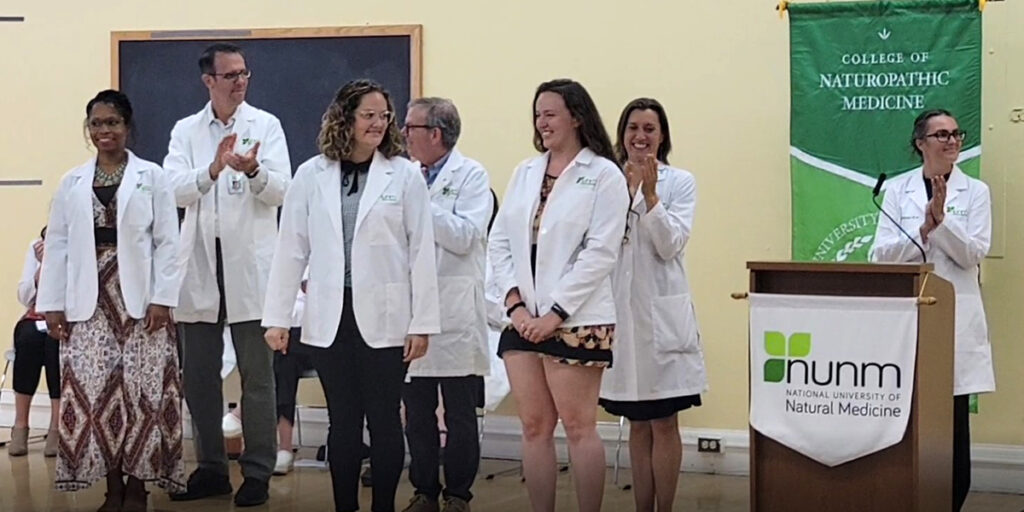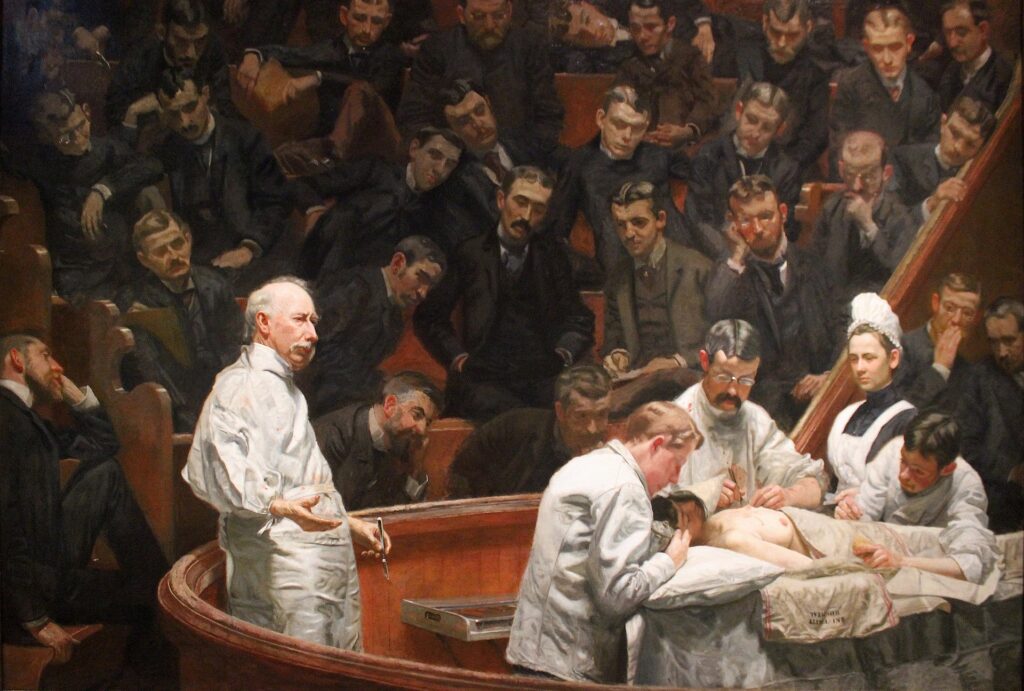
Forty-five new students representing the Class of 2026 Doctor of Naturopathic Medicine (ND) degree program donned their professional physician attire for the first time at the in-person and virtual White Coat Ceremony held Sept. 8, 2022 on the NUNM campus.
Emceed by Kelly Baltazar, ND, dean of NUNM’s ND degree program, the White Coat Ceremony was a celebration of their transition into medical school, a dedication to the practice of naturopathic medicine, and a formal arrival into the community of healers and practitioners.
“The white coat means many things to many people: for you, I hope you find it to be a symbol of hope, of the steady healer and a compassionate helper,” Dr. Baltazar said. “Our world is calling out for helpers. Thank you for stepping into this path.”
Other speakers at the ceremony included current NUNM student Laura Clevenger, Doctor of Naturopathic Medicine, Class of 2024, and President, Naturopathic Medical Student Association—NUNM Chapter; Dee Saunders, ND, MS, Dean of NUNM’s Graduate Medical Education and Clinical Affairs; Elyse Ortiz, ND, NUNM Staff Physician; and NUNM President/CEO Dr. Melanie Henriksen.
“Today’s ceremony is more than just a symbol of the physician you’ve set out to become: it should serve as a constant reminder that you have chosen the road less taken — you have dedicated yourself to the service of others,” said NUNM President/CEO Melanie Henriksen, ND , LAc, CNM. “The symbolism of the white coat means something to you as a provider and also to the patients you will serve.”
After donning their white coats, the new ND students in attendance recited an oath they composed, just hours before the ceremony took place, as part of a group reflective exercise. The oath reads:
“I vow to be an honest, empathetic and open-minded physician that practices with compassion and integrity, always being inclusive and transparent with my patients, invoking the truth within my community. I vow to be selfless in my practice and put my patients’ needs before my own while simultaneously trusting my intuition as a healer. I vow to listen to my patients as they know their bodies best. I will lead with the core principle of ‘do no harm’ in every encounter with my patients. I will also serve as a teacher to both my patients and peers and promote an integrative form of healing the patient.”
For those who were unable to attend, a recording of the ceremony is available at this link.
History of the White Coat Ceremony
While putting on a white coat is an important rite of passage for budding naturopathic doctors, it’s interesting to note that white hasn’t always been the color most often associated with the medical profession. Until the 19th century, most physicians wore black clothing, since black was thought to be a formal color, worn by priests and other respected professions.
The idea of white coats in association with doctors caught on in the United States around 1889 when painter Joseph Eakins unveiled his renowned painting “The Agnew Clinic,” which depicts Hayes Agnew, MD, wearing a white coat while performing surgery, with assistants also clad in white. This painting fostered an image of doctors being clean and sanitary in their white attire, and stood in stark contrast with the “snake-oil” charlatans who offered bogus cures to the public.

By the mid-20th century, doctors and nurses had largely adopted white clothing to signify new cleanliness standards, such as the use of antiseptics and the practice of handwashing to prevent infections. Along with the mass production and use of antibiotics, used to treat injured soldiers during World War II in the 1940s, white coats became standard for medical students, residents and fellows, doctors and nurses in North America.
Today, white coat ceremonies are common at most medical schools; NUNM held its first White Coat Ceremony in 2013. But these formal events are a relatively new phenomenon that did not become common until the late 20th century. The first two well-documented white coat ceremonies took place in 1989 at the University of Chicago and in 1993 at Columbia University in New York City.
The first White Coat Ceremony took place at the University of Chicago medical school in 1989 after a professor complained to the Dean of Students Norma F. Wagoner that first-year medical students “were showing up in shorts and baseball caps.”
To mandate a professional look, Dean Wagoner created a formal event to give medical students white physician coats. Parents were invited and students were told that “for any session where we have patients present, we expect you to look like professionals, wear the white coat and behave appropriately.”
In 1993, a White Coat Ceremony was established at Columbia University by Dr. Arthur Gold, who added the recitation of the Hippocratic Oath to the ceremony. Like Dean Wagoner, Dr. Arnold believed medical students needed to acknowledge the professional standards and responsibilities of the medical profession – before starting formal training.